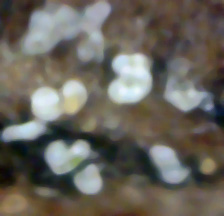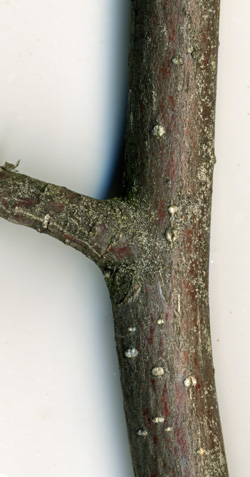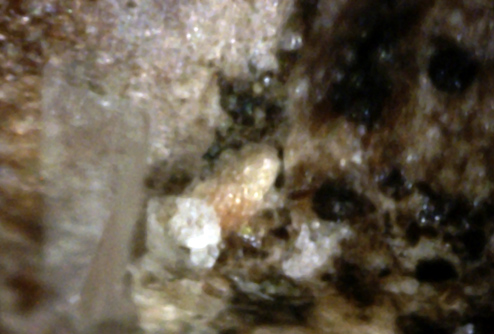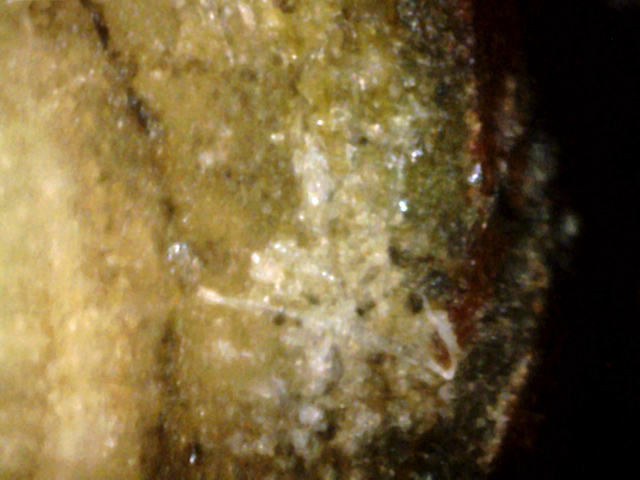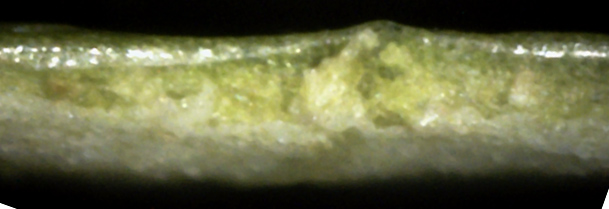This Tulip tree in our front yard was incredibly healthy until a few years ago when white canker hit.
This is a dead branch from that tree - one that probably died a year or two ago.
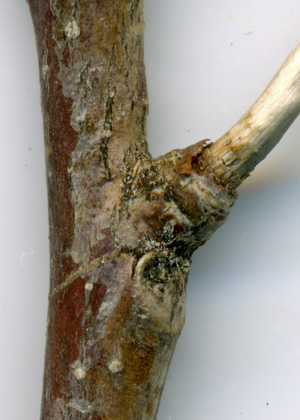
1
The bottom of a branch junction, about 8" from the branch tip.
Note the profusion of spores at the branch junction.
They apparently killed off the smaller branch, destroying its bark. The spores
only seem congregated on the diseased wood - there are no spores on the nearby
"clean" wood.
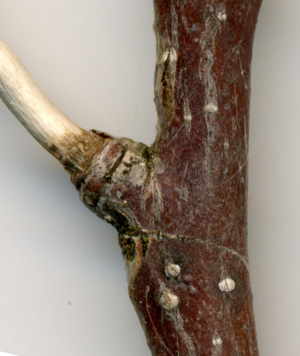
2
In contrast to the bottom of the branch junction, the top of this junction has no spores!
For some reason the spores seem to prefer to populate the underside of branch junctions.
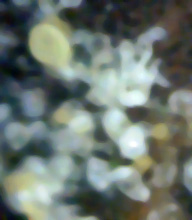
3
A close-up of the spores present at the bottom of the branch junction.
They are white with a fat clamshell appearance.
There are also some young yellow spores interspersed with them. (400x)
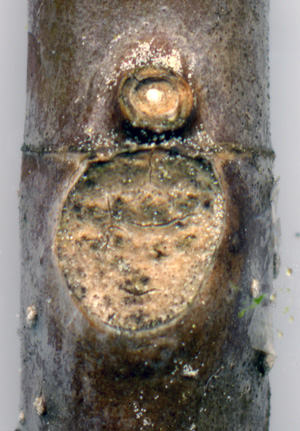
6
This branch Scar from a live branch was about 5' in from the branch tip.
There are abundant spores present, but again,
in close proximity to the leaf or branch junctions.
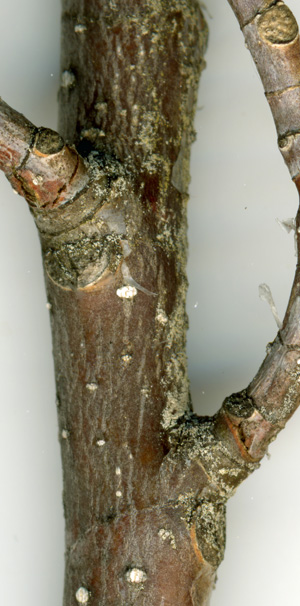
7
The center branch is live, but the two side twigs are dead.
There are lots of spores around the junctions, and the bark between them is almost solid with spores.
While the above set of pictures was taken in late May, the following set was taken
in late September. At this time the white canker had already reproduced by shedding it's spores.
Hence, spores were hard to find.
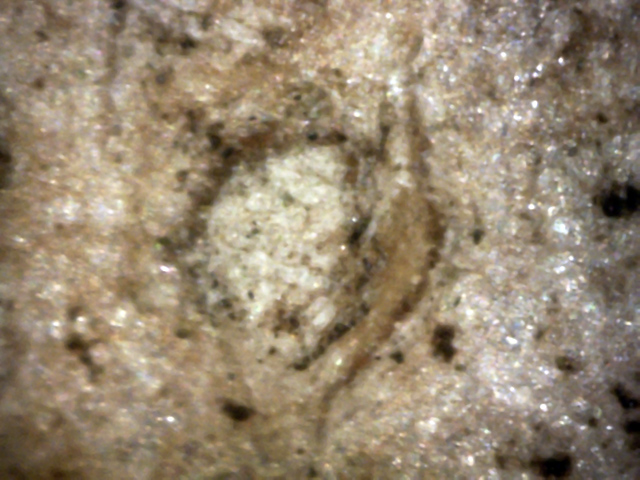
8
While the outer bark was generally free of indications of white canker, this area was like an island of
them. (400x)
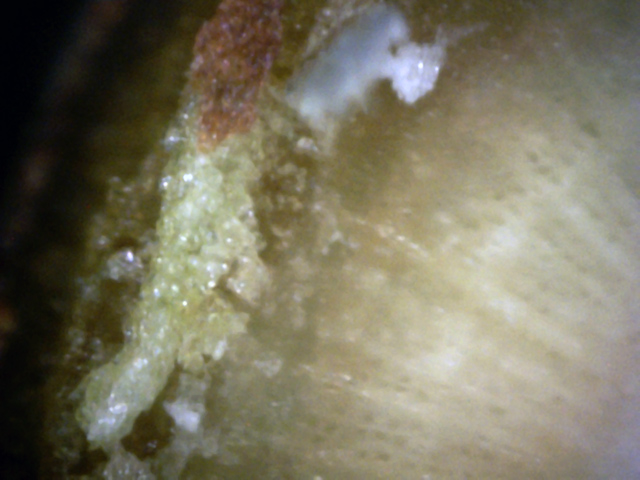
10
This twig cross-section shows canker present both in the bark (yellow) and in
the sapwood (white). (400x)
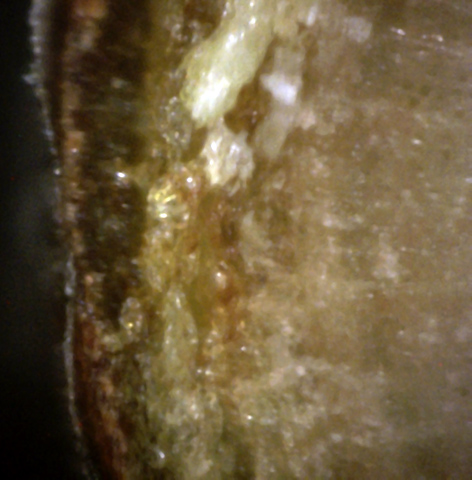
12
The white blob on top is white canker growing in the sapwood, while the light
yellow blobs on the left are white canker growing in the inner bark. (400x)
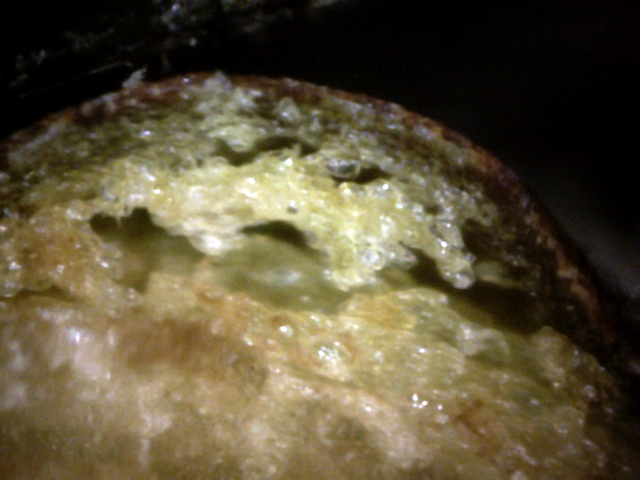
13
The canker in the bark and sapwood have combined and destroyed so much wood
that air pockets are actually created under the bark. (400x)

14
It appears that this is a prime example of all the components of white canker:
a shapeless white growth, a spore about to emerge, and a hypha connecting the two.
It's rare to see all three of these objects together. (400x)
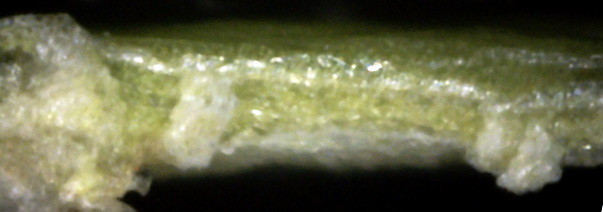
15
Good example of white canker blobs in the leaf (although they look gray).
There appears to be an area on the leaf bottom connecting them.
Also, it looks as if the razor cut through the canker blob on the left,
seeming to show that the canker material engulfs the green leaf cells. (400x)

16
Note the gray hypha with gray canker blobs along it, running along the bottom of the leaf,
although rising in the middle of the picture. (400x)
